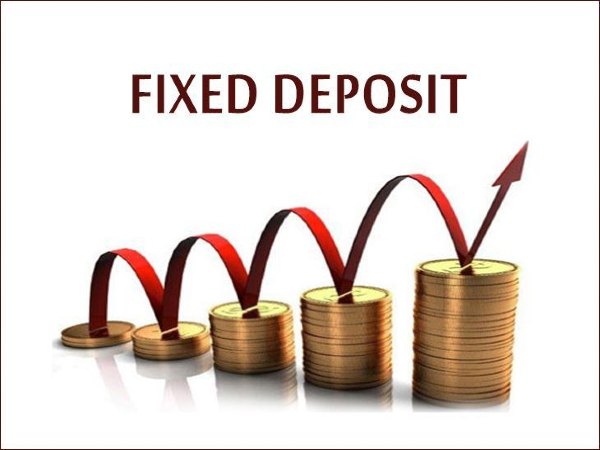4 Best 5-Year Fixed Deposits With Interest Rates Up To 7.25%
[ad_1]
Read More/Less
Suryoday Small Finance Bank Fixed Deposit
Among the small finance banks, Suryoday Small Finance Bank is currently providing the highest interest rates to both regular and senior citizens. For a deposit period of 5 years, the bank is now giving an interest rate of 7.25% to regular customers and 7.75% to senior citizens which are much higher than the interest rates of leading private and commercial banks. For a deposit amount of less than Rs 2 Cr, here are the most recent interest rates on FD of Suryoday Small Finance Bank.
| Tenure | Regular FD Rates | Senior Citizen FD Rates |
|---|---|---|
| 7 days to 14 days | 4.00% | 4.50% |
| 15 days to 45 days | 4.00% | 4.50% |
| 46 days to 90 days | 5.00% | 5.50% |
| 91 days to 6 months | 5.50% | 6.00% |
| Above 6 months to 9 months | 6.00% | 6.50% |
| Above 9 months to less than 1 Year | 6.25% | 6.75% |
| 1 Year to 2 years | 6.75% | 7.25% |
| Above 2 Years to 3 Years | 7.00% | 7.50% |
| Above 3 Years to less than 5 Years | 7.10% | 7.60% |
| 5 Years | 7.25% | 7.75% |
| Above 5 years to 10 years | 6.50% | 7.00% |
| Source: Bank Website, W.e.f. 15.02.2021 |

Utkarsh Small Finance Bank Fixed Deposit
On a deposit amount of less than Rs 2 Cr for a period of 5 years, this small finance bank is now giving an interest rate of 7% to the general public and 7.50% to senior citizens. With effect from October 19, 2020, the below listed fixed deposit interest rates of Utkarsh Small Finance Bank are in force.
| Tenure | Regular FD Rates | Senior Citizen FD Rates |
|---|---|---|
| 7 Days to 45 Days | 3.00% | 3.50% |
| 46 Days to 90 Days | 3.25% | 3.75% |
| 91 Days to 180 Days | 4.00% | 4.50% |
| 181 Days to 364 Days | 6.00% | 6.50% |
| 365 Days to 699 Days | 6.75% | 7.25% |
| 700 Days | 7.00% | 7.50% |
| 701 Days to 3652 Days | 6.75% | 7.25% |
| Source: Bank Website |

Jana Small Finance Bank Fixed Deposit
Jana Small Finance Bank is currently offering interest rates of 6.75 per cent to the general public and 7.25 per cent to senior people on deposits of less than Rs 2 Cr for a term of 5 years. Here are the current fixed deposit interest rates of Jana Small Finance Bank which are in force from May 7, 2021.
| Tenure | Regular FD Rates | Senior Citizen FD Rates |
|---|---|---|
| 7-14 days | 2.50% | 3.00% |
| 15-60 days | 3.00% | 3.50% |
| 61-90 days | 3.75% | 4.25% |
| 91-180 days | 4.50% | 5.00% |
| 181-364 days | 5.50% | 6.00% |
| 1 Year[365 Days] | 6.25% | 6.75% |
| > 1 Year – 2 Years | 6.50% | 7.00% |
| >2 Years-3 Years | 6.50% | 7.00% |
| > 3 Year- | 6.75% | 7.25% |
| 5 Years[1825 Days] | 6.50% | 7.00% |
| > 5 Years – 10 Years | 6.00% | 6.50% |
| Source: Bank Website |

Ujjivan Small Finance Bank Fixed Deposit
On deposits of less than Rs 2 Cr for a duration of 5 years, Ujjivan Small Finance Bank is now providing interest rates of 6.75 per cent to the general public and 7.25 per cent to senior citizens. Here are Ujjivan Small Finance Bank’s current fixed deposit interest rates, effective from March 5, 2021.
| Tenure | Regular FD Rates | Senior Citizen FD Rates |
|---|---|---|
| 7 Days to 29 Days | 3.05% | 3.55% |
| 30 Days to 89 Days | 4.05% | 4.55% |
| 90 Days to 179 Days | 4.80% | 5.30% |
| 180 Days to 364 Days | 5.20% | 5.70% |
| 1 Year to 2 Years | 6.50% | 7.00% |
| 2 Years and 1 Day to 3 years | 6.75% | 7.25% |
| 3 Years and 1 Day to 5 Years | 6.75% | 7.25% |
| 5 Years and 1 Day to 10 Years | 5.80% | 6.30% |
| Source: Bank Website |

Conclusion
The first step in selecting a fixed-term deposit option is to evaluate the interest rates offered by different lenders. The interest rate is decided by a number of criteria, such as the amount of the deposit, type of applicant, i.e. regular citizen or senior citizen, and the period chosen. Small Finance Bank FDs are also insured by DICGC deposit insurance of Rs. 5 lakh, which lowers the security aspect of the investors, particularly for senior citizens. Hence, investing in Small Finance Bank Fixed deposits can be a secure investment choice for risk-averse individuals looking for a consistent way to increase their wealth. You will not only hold the highest FD rates, variable tenures, and periodic payouts option, but you will also receive assured returns that are not influenced by market volatility.
[ad_2]













 How central govt. employees can avail benefits under NPS?
How central govt. employees can avail benefits under NPS?









